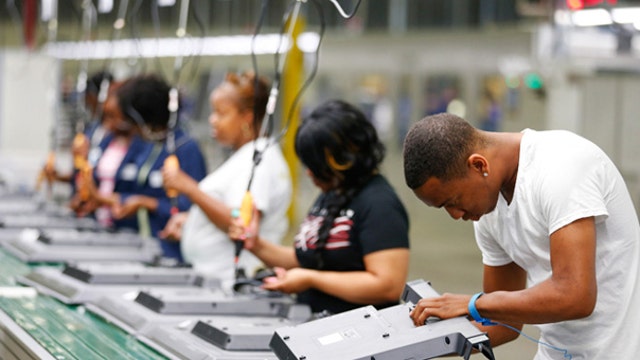U.S. Economy Adds Fewer Jobs than Expected in July
The U.S. economy added 215,000 jobs in July, another solid month for job creation that will fuel growing speculation that the Federal Reserve will start raising interest rates in September.
The headline unemployment rate was 5.3% last month, versus 5.3% in June. Analysts had predicted the economy would generate 223,000 new jobs in July and that the unemployment rate would hold steady at 5.3%.
“Altogether, we view this report as easily clearing the hurdle needed to keep the Fed on track for a September rate hike, and as such, we continue to look for the first hike in September,” Barclays analysts said in a note.
Still, the analysts worried that lingering worries about global growth that have weighed heavily on the commodities markets in recent weeks could keep the Fed from reacting enthusiastically to the better data trends in the U.S.
“Of course, there is still one more jobs report before September that, combined with lingering uncertainty about developments in the external environment, could push the Fed to delay the rate hike cycle; but we view the bar for not moving as much higher right now,” they noted.
There were concerns that the sprawling energy sector could experience significant layoffs as a result of falling oil prices that have cut deeply into oil companies’ profits. During the month, jobs in the oil and gas extraction segment remained mostly flat at about 193,000 jobs created, a 7,100 decline from the same period last year. Overall in the mining and logging segement, the Labor Department reported a loss of 79,000 jobs.
Much of the focus on last month’s employment report was on wage growth, the one element of U.S. labor markets that has lagged during the lengthy recovery from the 2008 financial crisis.
Average hourly earnings for all workers rose 5 cents in July to $24.99, rising 2.1% over the year. Economists had expected wages would rise slightly, 0.2% in July from June. Private-sector wages, meanwhile, rose 3 cents to $21.01.
The average workweek for all employees in the U.S. increased 0.1 hour to 34.6 hours in July.
The dilemma facing the Fed policy makers is that raising interest rates will make it more expensive for consumers to borrow money to pay for big ticket items such as new home, a car or a kitchen appliance. Central bankers are extremely reluctant to start raising those borrowing costs knowing that consumers’ paychecks aren’t getting any bigger.
The Fed is widely believed to be preparing markets for a September liftoff. After months of saying the decision will be “data dependent,” the Fed can now make a strong argument that the data justifies raising rates and moving forward with its plan to normalize U.S. monetary policy after years of stimulus in the wake of the 2008 financial crisis.
A healthy second quarter GDP report released last week revealed the economy rebounded from a weak first quarter. What’s more, the report showed that the economy grew slightly in the first quarter rather than contracted as had been previously believed. Housing and manufacturing data has also been trending upward in recent months.
All the while, monthly labor reports have been almost universally strong, averaging around 250,000 new jobs as the unemployment rate has fallen to its lowest level in seven years. The fly in the ointment, however, in otherwise rosy jobs reports, has been stubbornly weak wage growth.
Nevertheless, influential Fed members – not least Fed Chair Janet Yellen – have been consistently adamant in their predictions that the tightening labor market will eventually push wages higher and lift inflation closer to the Fed’s 2% target rate.




















